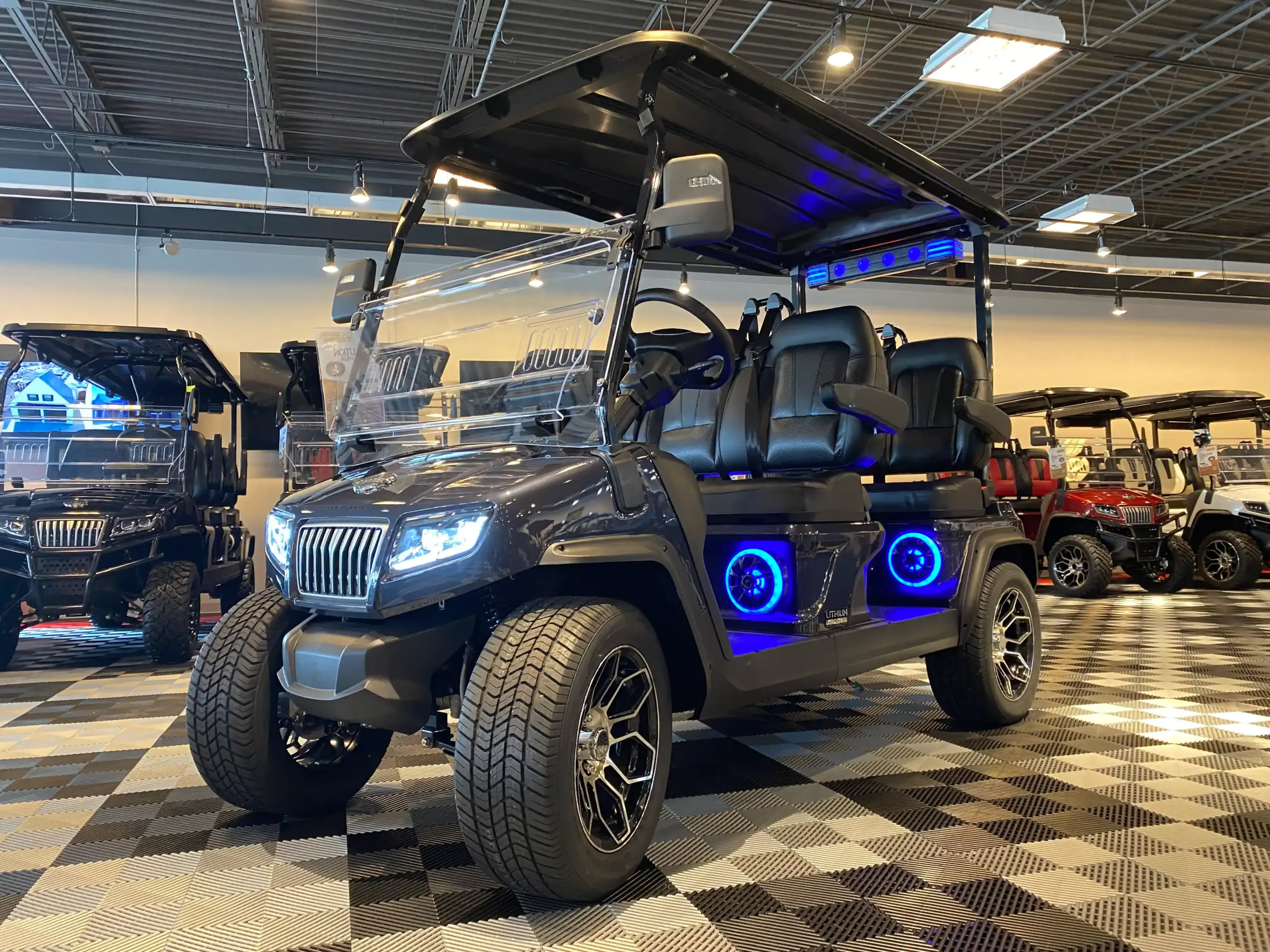Electric golf carts have become a popular choice on the golf course and in various recreational and residential settings. One common question is, “How many miles can an electric golf cart last?” The answer depends on several factors, including battery type, terrain, driving habits, and maintenance practices. This comprehensive guide will delve into the essentials of electric golf cart battery life and provide insights on maximizing range and reliability.

Battery Capacity and Range:
The primary factor determining the electric golf cart range is its battery capacity. These carts typically use either lead-acid or lithium-ion batteries, each with advantages and considerations.
- Lead-Acid Batteries: Although less efficient than lithium-ion counterparts, traditional lead-acid batteries are commonly found in older golf cart models. On average, an electric golf cart with lead-acid batteries can travel 25 to 40 miles on a single charge, depending on terrain and load.
- Lithium-Ion Batteries: Lithium-ion batteries offer superior performance and longer battery life than lead-acid batteries. Golf carts equipped with lithium-ion batteries can typically travel between 50 to 80 miles or more on a single charge, making them the best choice for those seeking extended range and reliability.

Terrain and Driving Conditions:
The terrain on which you use your electric golf cart can significantly impact its battery life and overall range.
- Flat Terrain: Electric carts perform more efficiently on flat terrain, allowing them to maximize their range potential with minimal power consumption.
- Hilly Terrain: Navigating hilly terrain may require more power, reducing the overall mileage of the cart. Consider alternative routes or driving techniques to mitigate the impact on battery life.

Driving Habits and Speed:
Your driving style directly affects the efficiency of your electric golf cart and its battery life.
- Speed: Higher speeds typically result in greater power consumption, reducing the cart’s range. Maintaining a moderate speed can help conserve battery life and maximize the electric golf cart range.
- Acceleration and Braking: Smooth acceleration minimizes energy loss and optimizes battery efficiency. Avoid abrupt maneuvers whenever possible to preserve battery life.

Battery Maintenance:
Regular maintenance is essential for maximizing the lifespan and performance of your golf cart batteries.
- Charging: Follow the manufacturer’s recommendations for charging your batteries to ensure optimal performance and longevity. Avoid deep discharges and charge the cart after each use to maintain a full charge.
- Water Levels (for Lead-Acid Batteries): If your cart uses lead-acid batteries, regularly check and maintain the water levels to prevent damage and optimize performance.
- Battery Replacement: Over time, batteries may lose capacity and require replacement. Consider replacing aging batteries to restore range and performance.

Energy Efficiency Tips for Electric Golf Cart Users
Optimizing energy efficiency is crucial for maximizing the range and performance of electric golf carts. Users can follow several tips to ensure efficient operation and prolonged battery life. Firstly, maintaining a moderate speed helps conserve battery power, as high speeds increase energy consumption. Additionally, smooth acceleration and braking techniques minimize energy loss, optimizing battery efficiency. Planning routes to avoid steep inclines whenever possible reduces the strain on the battery, extending the cart’s range.
Furthermore, scheduling charging sessions during off-peak hours when electricity demand is lower can save costs and reduce strain on the power grid. Lastly, keeping the golf cart clean and well-maintained, including adequately inflated tires, ensures optimal performance and efficiency. By implementing these energy efficiency tips, electric golf cart users can maximize their driving range and minimize environmental impact.
Future Trends in Electric Golf Cart Battery Technology
As technology advances, electric golf cart batteries are poised for significant evolution. Future trends include advancements in lithium-ion chemistries, enabling increased energy density and lifespan. Fast charging technologies will reduce downtime, while wireless charging systems promise seamless replenishment. Integration with renewable energy sources like solar and wind power aims for sustainability. Intelligent battery management systems will optimize performance through AI and machine learning. Enhanced safety features ensure safe operation. Collectively, these trends promise improved performance, efficiency, and sustainability for electric golf carts, shaping the future of golf course transportation.
Conclusion: Maximizing Your Electric Golf Cart’s Mileage
In conclusion, the range of an electric golf cart depends on various factors, including battery type, terrain, driving habits, and maintenance practices. While lead-acid batteries offer an average range of 25 to 40 miles, lithium-ion batteries provide a significantly higher range of 50 to 80 miles or more on a single charge. By choosing the correct battery type, driving sensibly, and performing regular maintenance, you can maximize the range and reliability of your electric golf cart for years to come.







